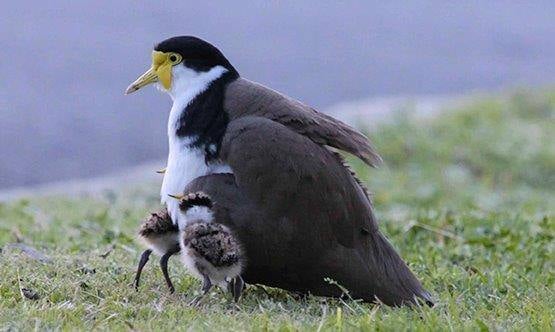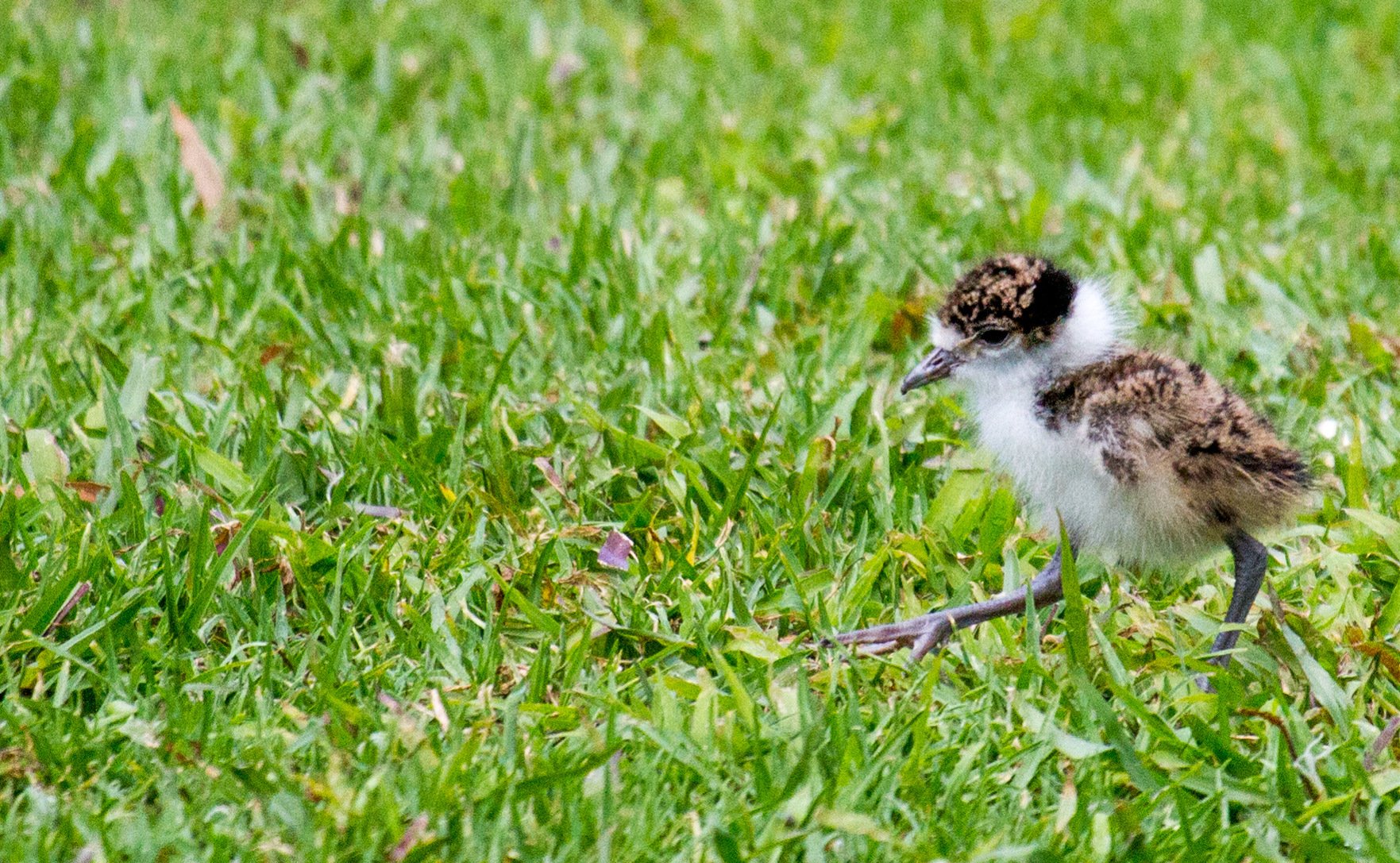plovers and
masked lapwings
- Home
- What We Do
- Wildlife information
- Species Information
- Plovers and Masked Lapwings
About Plovers and Masked Lapwings
Plovers or Masked Lapwings are fairly large birds. They have long reddish legs and large yellow facial wattles. Plovers inhabit virtually the whole of Australia and are commonly found on the shores of swamps and lakes. They commonly inhabit large grassy areas, particularly those areas cleared for pasture or parkland.
Plovers usually lay their eggs after local rains. They lay up to four eggs on the ground in a small depression in open areas so they can see their predators. However, these birds have now come to accept flat roofs as a suitable nesting site, as they are generally safe from humans and predation.
The eggs will hatch in about 28 days. Plovers have spurs on their wings however despite common belief, these are not poisonous.
Leaving the nest
Unlike many other dependent bird chicks, Masked Lapwing chicks have a full covering of down and are able to leave the nest and feed themselves a few hours after hatching.
Parents provide protection, direction and warmth. In urban environments plovers may lay their eggs on roof tops for safety. In most cases, the chicks will be able to jump down safely from the roof.
This is a natural process undertaken by many bird species, including some ducks who nest in tree hollows, and the chicks are remarkably resilient to the long fall but may require assistance if the distance is too great. In some circumstances, the chicks may not be able to jump and may require assistance to reach the ground. However, interference with chicks should only occur on an absolute necessity basis.
It is possible to reunite chicks with their parents at ground level in these situations, call WIRES 1300 094 737 for advice.


Swooping and Screeching
Plovers are very protective of their nests and chicks.
This is particularly the case after the chicks have hatched.
Adults may dive on intruders, use loud noises and swooping or act as though they have a broken wing in an attempt to lure the intruder away from the nest.
This behaviour is mostly bluff and actual contact attacks are rare.
Regardless, it is this fearlessly protective nature that brings them into conflict with people.
What you can do
- It is important to remember that plover swooping only occurs for a short period of time.
- Once the chicks have fledged (i.e. are able to fly), the level of protection will significantly decrease.
- If you have plovers swooping in your area, try to avoid the nesting area and do not antagonise the birds.
- If you cannot avoid the area, try not to walk directly towards the birds or make eye contact with them.
- Wearing a large hat or bike helmet when in their vicinity can also help.
- If the nest site is simply in a vulnerable position, a protective fence/table/chair can be placed over the nest site so that the birds can come and go safely until the chicks are hatched.
- If the problem cannot be avoided or solved, or if you are unsure, call WIRES for advice 1300 094 737
WIRES Does NOT advise removing eggs or nests
When attempts have been made in the past to relocate the eggs and nests to a more suitable location - the parent birds rarely follow, resulting in abandonment. Total relocation will need to be done correctly and carefully on a case-by-case basis by WIRES or NPWS. Relocation or removal of native eggs/nests requires a NPWS permit.
Although it is possible for experienced WIRES members to incubate the eggs, this requires specialised equipment and training. There are also many serious ethical and ecological considerations associated with hatching and raising chicks intended for release into the wild outside of their natural learning environment.
Report a Rescue
For wildlife rescue assistance you must call 1300 094 737 or fill in the Report a Rescue form. All other forms of contact including Facebook are not monitored for rescues.